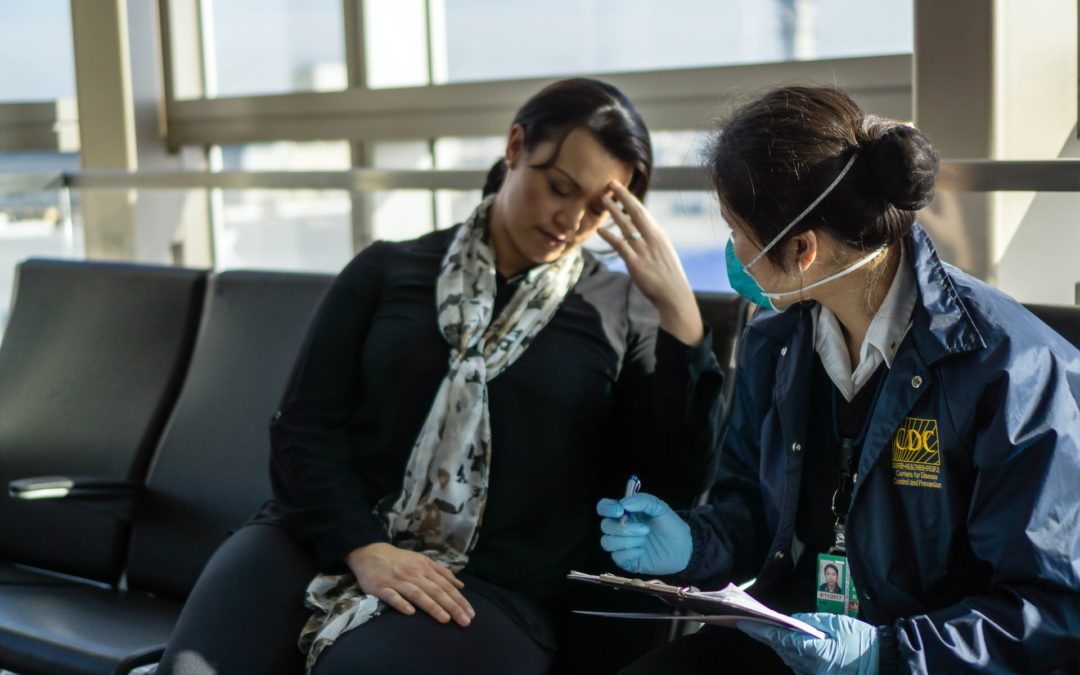The ongoing coronavirus pandemic has been devastating for the vast majority of U.S. businesses. Yet for some companies, the global crisis has turned into a major boon.
Pharmaceutical corporations, teleconferencing companies and video-streaming services are all positioned for growth despite the broader economic landscape. Telehealth providers are likewise seeing a spike in business, with New Jersey-based Health Recovery Solutions (HRS) serving as the perfect example.
Founded in 2012 by CEO Jarrett Bauer and a couple of college friends, HRS has grown into one of the fastest growing telehealth companies operating in the home health care space.
Historically, HRS has promoted its technology as a way for home health providers and other organizations to lower costly hospital readmission. Now, it’s seeing widespread and skyrocketing demand specifically because of the coronavirus.
“It seems like overnight, the walls of hospitals and the U.S. health care system have been broken down,” Bauer told Home Health Care News. “And we’re not going back.”
Among its hardware and software offerings, HRS sells a remote monitoring kit that comes with blood pressure monitors, scales and pulse oximeters. To help health care providers tackle the coronavirus emergency, the company is also offering tech packages tailored to COVID-19.
So far, HRS has sold thousands of COVID-19 kits, according to Bauer. Many have been sent to providers in particularly hard-hit areas, including Washington, New York and California.
Similarly, providers have downloaded HRS software solutions and mobile apps “at a staggering pace,” noted Bauer, who got the idea for his company while pursuing his MBA at Johns Hopkins University and seeing his grandmother suffer through an avoidable hospital readmission related to heart failure.
“Necessity is the mother of innovation,” he said. “We will be the most advanced sector in all of America. It’s because we have to be. Every single person in the country wants [in-home telehealth] right now.”
Over the past two weeks, HRS has received a new order for one of its telehealth kits roughly every two hours. At the start of the first quarter, HRS projected to sell 16,000 kits in 2020; it now expects to sell more than 40,000 this year.
To help keep up with that demand, HRS has even had to expand its warehouse capacity.
Three months ago, the company’s warehouse held about 2,000 kits. HRS is in the process of expanding its warehouse capacity to more than 10,000 kits, Bauer told HHCN.
‘We need so much more’
Generally, the increased demand in HRS is coming from two main sources, according to Bauer.
A good chunk of the demand has come from home health agencies based out of large health systems. Such organizations are looking for hardware — tablets, pulse oximeters, blood pressure monitors and more — to help keep patients at home and out of their system’s hospitals
Even in a best-case scenario where the United States manages to contain the spread of coronavirus to about 20% of the adult population over the course of 18 months, American hospital beds would likely end up about 95% full, according to Harvard Global Health Institute data.
In a worst-case scenario where COVID-19 is spread to 60% of the U.S. adult population over six months, the country would likely need more than seven times the number of hospital beds it currently has.
At the same time, heightened demand is also coming from larger, standalone home health agencies specifically looking to use telehealth to streamline physician face-to-face (F2F) requirements. Using telehealth for F2F became an option after the Centers for Medicare & Medicaid Services (CMS) announced expanded policies last week.
CMS confirmed F2F can be conducted via telehealth on Friday.
“We were pushing for and advocating for the face to face being able to be performed virtually instead of needing to be done in person,” Bauer said. “That just had to happen.”
Still, physicians and other health care practitioners have much more leeway when it comes to getting reimbursed for telehealth services compared to home health providers. While home health providers can do F2F via telehealth, they typically can’t get paid for in-home visits delivered via telehealth technology.
Changing that will be crucial for home health providers to make a dent in the coronavirus pandemic.
“We still need so much more right now,” Bauer said. “How are we going to solve the [hospital] capacity issues in America? We need [providers] to be paid correctly, and we need [them] to be paid more.”
Overall, HRS partners with more than 150 medical centers across 40 states.
Bauer isn’t the only telehealth executive who’s bullish about the direction CMS is taking telehealth.
Mordy Eisenberg — COO and co-founder of Tapestry Telehealth, a company that has traditionally worked in the skilled nursing space — has an equally optimistic outlook.
“When I see these things being lifted in an emergency, it’s like — I think [policymakers] get it,” Eisenberg recently told HHCN. “They recognize that this is really effective and this needs to be done. I think, ultimately, they’re going to recognize that the costs are far lower, and maybe just accelerate some of the changes to the laws and make them more permanent.”
—– By Robert Holly | March 23, 2020
Source: Home Health Care News

